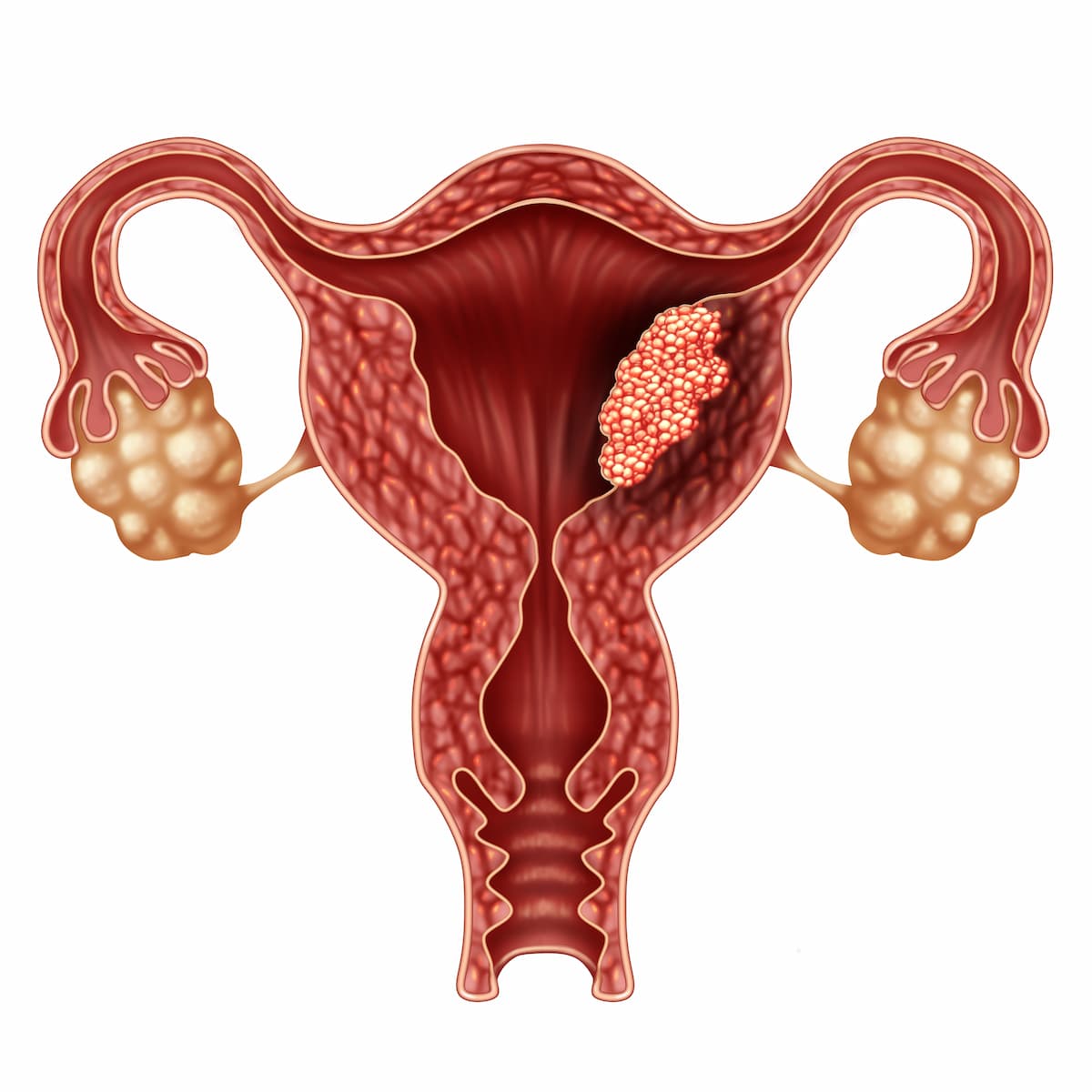Avelumab/Chemo Warrants Consideration in Advanced Endometrial Cancer
Adding avelumab to carboplatin plus paclitaxel appears to elicit a progression-free survival advantage compared with chemotherapy alone in those with advanced or recurrent endometrial cancer.
Avelumab (Bavencio) plus first-line chemotherapy resulted in an improvement in progression-free survival (PFS) for patients with advanced or recurrent endometrial cancer, although further research is needed to confirm its benefit in the mismatch repair deficient population (dMMR), according to findings from the phase 2 MITO END-3 trial (NCT03503786).
“These data support the initial reports of avelumab as a single agent in the recurrent setting showing promising activity in the dMMR population," according to the authors of the phase 2 MITO END-3 trial.

With a median follow-up of 23.3 months (interquartile range [IQR], 13.2-29.6), there were 91 PFS events, with 49 events among 62 patients in a standard group who received chemotherapy alone vs 42 events among 63 patients in the experimental group who received avelumab plus chemotherapy. Additionally, the median PFS was 9.9 months (95% CI, 6.7-12.1) in the standard group vs 9.6 months (95% CI, 7.2-17.7) in the experimental group (HR, 0.78; 60% CI, 0.65-0.93; P = .085).
Investigators of the open-label, randomized, controlled, phase 2 MITO END-3 trial compared avelumab plus chemotherapy with chemotherapy alone as treatment for patients with advanced or recurrent endometrial cancer. Patients were randomly assigned 1:1 to receive 5 mg/mL of carboplatin per minute plus 175 mg/m2 of paclitaxel intravenously every 3 weeks for 6 to 8 cycles with or without 10 mg/kg of avelumab intravenously every 3 weeks and then every 2 weeks as single maintenance therapy after chemotherapy.
The primary end point was investigator-assessed PFS in the intent-to-treat population. Secondary end points included overall survival (OS), objective response rate (ORR), duration of response (DOR), and safety and tolerability.
Patients 18 years or older with histologically confirmed stage III to IV or recurrent endometrial cancer and an ECOG performance status of 0 or 1 were eligible for enrollment on the trial. Additional inclusion criteria included having measurable disease per RECIST v1.1 guidelines and availability of a formalin-fixed paraffin-embedded tumor tissue sample from the primary surgery for biomarker analyses.
Of 125 eligible patients, 62 received carboplatin plus paclitaxel in the standard group and 63 received avelumab plus carboplatin and paclitaxel in the experimental group. The median patient age was 65 years (IQR, 59-71), 81% of patients had an ECOG performance status of 0, 52% had advanced disease at diagnosis, and 48% had recurrent disease. Additionally, 46% of patients were dMMR, and 59% had PD-L1–negative tumors.
Investigators noted that the experimental and standard treatment groups were comparable in terms of known prognostic factors.
There were 22 patient deaths in each treatment group that was mainly attributed to disease progression excluding 2 in the experimental group: 1 died due to respiratory failure and 1 died due to cardiac arrest. Median OS was 27.4 months (95% CI, 20.8-not estimated [NE]) in the standard group and not reached (95% CI, 19.8-NE) in the experimental group (HR, 1.13; 95% CI, 0.62-2.07; P = .91).
Investigators identified a significant association between treatment effect and MMR status in terms of PFS (P = .015) and OS (P = .029). In the dMMR subgroup, the 12-month PFS rate was 60% (95% CI, 38%-76%) vs 35% (95% CI, 18%-52%), and the 24-month PFS rate was 50% (95% CI, 29%-68%) vs 13% (95% CI, 4%-30%) in the experimental and standard groups, respectively. The 12-month and 24-month OS rates were 87% (95% CI, 65%-96%) vs 79% (95% CI, 59%-90%) and 76% (95% CI, 51%-89%) vs 55% (33%-73%) in each respective group.
“[PFS] benefit in the dMMR population seemed to start during combined treatment with chemotherapy and avelumab,” the study authors stated. “These data support the initial reports of avelumab as a single agent in the recurrent setting showing promising activity in the dMMR population.”
In the mismatch repair proficient (pMMR) subgroup, the 12-month and 24-month PFS rates were 32% (95% CI, 17%-48%) vs 42% (95% CI, 24%-60%) and 17% (95% CI, 6%-33%) vs 21% (95% CI, 8%-39%) in the experimental and standard groups, respectively. The 12-month and 24-month OS rates were 67% (95% CI, 48%-80%) vs 87% (95% CI, 66%-96%) and 47% (95% CI, 26%-66%) vs 63% (95% CI, 37%-81%) in each respective group.
Investigators did not identify a statistically significant association between PD-L1 status and PFS (P = .70) or OS (P = .81).
The ORR was 50% (95% CI, 37%-62%) in the standard group vs 65% (95% CI, 53%-77%) in the experimental group (P = .088). The median DOR was 9 months (IQR, 5-21) vs 12 months (IQR, 5-28) in each respective group and was not significantly different based on MMR status (P = .28).
There were 24 serious adverse effects (SAEs) in the experimental group vs 7 SAEs in the standard group. The most frequent grade 3/4 AE was neutrophil count decrease in 31% of patients in the experimental group and 43% of those in the standard group. In the experimental group, 1 patient died due to respiratory failure following severe myositis that investigators identified as possibly related to treatment, and 1 patient died due to cardiac arrest that was not related to treatment.
Reference
Pignata S, Scambia G, Schettino C, et al. Carboplatin and paclitaxel plus avelumab compared with carboplatin and paclitaxel in advanced or recurrent endometrial cancer (MITO END-3): a multicentre, open-label, randomised, controlled, phase 2 trial. Lancet Oncol. 2023;24:286-96. doi:10.1016/S1470-2045(23)00016-5